|
It’s been a hot minute since my last trip to Belize, filming an episode of my TV series Word Travels. Back then, we hit the jungle, some Mayan ruins, the wetlands, and a Mennonite community for good measure (you can stream that Belize episode free on Tubi). Now I finally have the opportunity to see the beaches and coral reefs that I missed on the first trip, which concludes with the line: “If you do everything the first time, there’s less reason to return.” Swapping out a TV crew for my go-go-go daughter - a razor sharped chip off the old block - we’re following up our jungle adventure to Costa Rica with another foray into Central America. Much like Costa Rica, Belize is smashing things on the eco-tourism front, but Costa Rica doesn’t have Mayan ruins or an English-speaking population, somehow sheltered from the general mayhem found in its neighbours Guatemala and Honduras. Focusing on the beach and the world’s second largest barrier reef, my daughter showed impressive vim taking on the PADI Junior Open Water Certification, working hard on her e-learning, confined pools dives in Vancouver, and the four challenging ocean dives on the reef. You can read more about that journey in my Canadian Geographic column. What I didn’t mention was that singular moment – the bucket list moment – where all the travel and work and adventure coalesced. We were diving together through a canyon reef, which admittedly wasn’t the most spectacular dive in terms of marine life, but allowed us to explore a unique eco-system, and the weird sensation of scuba diving, together. Just another unforgettable moment in a lifetime of many. Wish there was a TV crew to capture it! Last night I discovered the word: Zugzwang. What the hell kind of a word is Zugzwang? A real English word, co-opted from German as it turns out. Definition: a situation in which the obligation to make a move in one's turn is a serious, often decisive, disadvantage. One day, I’m going to use that word in conversation, and I can’t wait. There must be a lot of Austrians Googling: “Where to find a great schnitzel in Canada?” because my column about skiing in the fantastic Silverstar Ski Resort, and taking my Austrian brother-in-law to Gerni's Farmhouse outside of Vernon, totally blew up. Gerni refers to the late Gernot Langes-Swarovski, founder of the Swarovski crystal empire, which owns the glitzy spa resort Sparkling Hill in the BC interior. Gerni liked his authentic Austrian food served in an authentic Austrian environment, so had a 16th century Austrian farmhouse dismantled and shipped over to his resort British Columbia. The menu and setting would make any Austrian traveller tear up with joy. Once they’ve settled down, they can explain to me what’s in a Almdudler. It’s a popular Austrian non-alcoholic soda, of a sort, that tasted like the innocence of childhood for no reason I can possibly explain. I also took the opportunity to do my best sack of potato impression while flying down an ice chute at 94 km/hr. A lot of people asked me why I felt compelled to do the public skeleton at the Whistler Bobsleigh Centre, and the answer is: because tourists actually do this, and it is undoubtably something unique, memorable, attainable and hilarious. Therefore: something to add to the bucket list. Jon Montgomery, who won skeleton gold in the skeleton at the 2010 Olympics, was a great sport for his quotes in my column, which pretty much captures the all-round absurdity of flying down a “frozen toilet chute.” Unseasonably warm weather totally zugzwanged me when it came to a long-planned multi-day snowmobile trip in Algonquin Provincial Park. We were watching snow reports during the worst winter season on record, and the trip was ultimately pulled just days before I was set to fly out to Ontario. A bummer in every way, because snowmobiling without snow is no fun at all. Climate change is going to wreak havoc on more and more travel plans, so purchasing a little travel insurance to fully recoup any upcoming flights in the case of unexpected chaos is no longer just another airline cash-grab, it’s a necessity. Finally, the second edition of The Great Western Canada Bucket List arrived at my doorstep and it looks fantastic. Packed with inspiration, it’s slim enough to gift to those travelling with carry-ons, and my wish is for it to land on the radar of anyone greeting newcomers to BC and Alberta. As you can tell on the companion site, there’s so much to explore and discover across a landscape that is both unique and diverse. The book will officially launch nationwide in May 14, look for it wherever you find your reading material.
0 Comments
T’was a time when chasing a bucket list did not necessitate cracking an Enigma code of shifting Covid tests and requirements, juggling what’s needed to board a plane, to enter a country, to embark on a boat, to disembark, to return in transit. T’was a time recently where nobody was allowed to travel at all, but it looks like we’re finally done with that bit. There’s still too much friction when it comes to global travel, the legacy of Covid lingering like a suds stain around a student’s bathtub. The good news is that much of the world has collectively decided to move on, focusing efforts on protecting the vulnerable while living with Covid the way we live with other problematic viruses. It just took time and money, which tends to solve most problems. The better news: last month I returned to both my Canadian and Global Bucket List after too long a hiatus, and I returned in style. I’ve always wanted to sail in the Caribbean, and I’ve waited over a decade to once again experience to the deep virgin snow of backcountry skiing. March presented the opportunities, and so I grasped them, tightly, with the wind at my sails, and a smooth path from peak to gully.  Having a moment on the bowsprit Having a moment on the bowsprit Part One: The Caribbean It started with a thought about sailing as an eco-friendlier form of cruising. Then I got lost in the fascinating real-life history of pirates, and distracted by the pool-clear waters of the Caribbean. Putting it altogether, I found the perfect itinerary on board one of the world’s largest passenger sail boats, a towering old-world tall ship operated by Swedish-owned, Malta-flagged Star Clippers. My experience will get its full due in an upcoming issue of the Vancouver Sun, but I will say this: Star Flyer – a 4-masted tall ship that swivels the head of even the saltiest sailor – is out of this world. It carries up to 166 passengers served by 74 crew, sailing the trade winds and ocean currents in the Caribbean, Mediterranean, Central America and across the Atlantic. Unlike cruising, you feel the ocean (sometimes a little more than you’d like, but that’s part of the adventure), visiting bays, islands and beaches beyond reach of the cruise ships. It’s a luxury sailing adventure for those who don’t know anyone with a luxury sailboat, which I’m assuming describes most of us. Staff and service is fantastic, the meals top notch, the cocktails smooth and the onboard amenities (two pools, a massage therapist, deck chairs, an open bridge, stocked library, water sports etc) most accommodating. Time slows down, and people read books, not feeds. You can do bucket list things like hang out on the bowsprit, sprawled on the netting as it dips over rolling waves above playful dolphins (yep, that happened). You can climb up the rope ladder to an 18m-high viewing platform, gazing over islands and ocean. You can bake in the sun like those fried European passengers who don’t seem to know about skin cancer. You can dance at night, request tunes from the pianist, dress like a pirate, or ask a thousand questions of the patient crew as they pull ropes and release topsails with special names that I forgot the moment I heard them. Pop into the Caribbean’s most legendary beach bars (the Soggy Dollar, Foxy’s etc) for a souvenir headache, nap in your cabin, listen to stories of fellow passengers, snorkel into sea caves, paddle-board, ogle at super yachts parking in St Barts. It’s everything one would expect the good life to be, and a very different kind of cruise experience. The more I travel on a small ship – a luxury river barge in the Amazon, a catamaran in the Galapagos, an expedition ship in the Antarctica – the more I fall in love with boats as a bucket list form of travel. If you can burn just 15% of the fuel of a regular ship, as the Star Flyer does under sail, it feels like the future of cruising, and the responsible way to go. As time progresses, I hope to add more small ships to my growing, curated bucket list cruise collection. Part Two: Catskiing in the Skeena
The last and only time I cat-skied was on a private mountain in Chile. We were filming an episode of Word Travels, and my single biggest memory of that adventure is nervously watching our cameraman Sean ski backwards while he filmed my descent with a large six-figure camera on his shoulder. It was the only true bluebird ski day I’ve ever had, when the sky is crystal clear after a big dump of white snow. Skeena Cat Skiing in BC would be my second, and this time I wouldn’t have to worry about my TV show crashing with a wipeout (I can do that all by myself, thank you). I had one day to switch my Caribbean bag for my snow gear, catching a prop flight north from Vancouver to the town of Smithers BC. Here I met a group of elite ski journalists, gathering at the helipad for our memorable ride into base camp. Any day you get to ride a helicopter is a good day. Skeena Cat Skiing is a family-run affair and clearly a passion project of immense love and hard work. Many hours away from anything, guests stay in heated dome tents buried in snow, which is a cool experience unto itself. The comfy, wood-fired heated lodge tent is loaded with fine beer, snacks, worn couches, and a friendly chef who prepared outstanding hearty dinners and desserts. We’re surrounded by the Thomlinson and Gail Creek mountains, 30,000 hectares of fresh powder and skiable glades in every direction. Our ski chair is a customized Piston Bully snow grader, with a large heated cabin for 14 passengers on the back. This ‘cat’ can go anywhere and everywhere it pleases, and it does. Skirting a steep ride, it deposited us at the top of runs that funnel into valleys where we would be collected by the cat for another ascent. Backcountry safety is taken seriously: we’re all equipped with avalanche kits, air bags, walkie-talkies, and given a tutorial in rescue. Veteran guides know what they’re doing and accidents are rare to non-existent. Any nerves dissipate after the first run, replaced with elation and joy and wowzers because this is the skiing you dream about, every time you strap in, and every time you head up a mountain. I was easily the weakest boarder of the group, and I’m no slopestyle expert (especially in the company of Olympic skier Yuki Tsubota). But even at my own pace, I was able to keep up, sharing the pinnacle of what snow sport can deliver. Cat skiing is more affordable than heli-skiing, and you can read more about both in my Bucket Listed column for Can Geo Travel. Suffice to say: it’s going to be hard going up a local ski hill again, but there’s always something to aspire to, and something to look forward to next time. You might also be a fan of the late author Douglas Adams, who wrote Hitchhikers Guide to the Galaxy, Dirk Gently’s Holistic Detective Agency and the genius dictionary of made-up words, the Meaning of Liff. In 1992, he wrote a book called Last Chance to See, a travelogue about his journey to visit animals on the verge of extinction. Although the book has dated (some rare creatures have now completely vanished), I’m struck at how ahead of his time Douglas Adams was. Not only did he give us the meaning of life (the number 42, in case you forgot), but he foresaw the sad reality that a modern bucket list is not so much about doing something before you die, but before it disappears. I write these words in the midst of a second unprecedented heat wave in a normally mild British Columbia summer. The first claimed over 500 lives in just three days, a staggering number that’s largely slipped under the flood of the 24-Covid news cycle. Meanwhile hundreds of wildfires are burning in the interior, smoking our skies sepia, evacuating thousands of people and torching the entire town of Lytton, a popular destination for river rafting. Scientists estimate over a billion marine animals cooked in the first heatwave, and more are undoubtably boiling in their shells this weekend as the temperature and humidex approach the mid 40°Cs. Climate change has come home to roost, and techno-evangelism (technology will save us!) suddenly rings a little hollow for Pacific Island nations soon be underwater, communities going up in flames, loved ones burying their dead or biodiversity battered by urban encroachment, poaching and agriculture. I know you come here for good news, but since I’m a pragmatic optimist, we have to accept that the near and far future will suffer increasingly extreme weather events, causing unparalleled environmental, financial and cultural devastation. All I can hope is that this finds you in a safe and stable nation with enough progressive foresight and resources to prepare for this eventuality. All I can hope is that my bucket list books do not become works of history – much like Last Chance to See - a review of destinations that also no longer exist. Unfortunately, not much has been gained in thirty years since Douglas Adams sounded his convincing warning bell, and so much has been lost. My new ‘Bucket Listed’ column for Canadian Geographic Travel combines commentary with my travel recommendations. Each column is short and punchy and well worth reading, especially my second column about Indigenous tourism. My joyous and poignant Celebration of Canada column was sunk by the sombre nature of this year’s Canada Day, which coincided with horrific discoveries of residential school graves, sparking outrage at the nation and Catholic church’s complicity in an obvious attempt at cultural genocide. It’s a heavy topic for non-Indigenous Canadians to grasp, which is why I highly recommend reading Peace Pipe Dreams: The Truth about Lies about Indians which uses a lighter touch to help us understand the many challenges and injustices that Indigenous communities face today. Next, I explored risk tolerance with a column entitled: Is it Safe to Travel Again? before jumping into practical tips for planning bucket list road trips and revealing some of my favourite, less-known experiences in every province. Speaking of road-trips, I recently returned from a little adventure of Vancouver Island with the kids, ticking off some must-do experiences along the way. The new Malahat Skywalk was spectacular, with a few unexpected offerings (like a slide, boardwalk and adventure net) to elevate the experience well above just another roadside attraction. I’ve long heard about caving on Vancouver Island, so I’m a little shocked it took me so long to get to the Horne Lake Caves. I just assumed they were typical show-caves, but it’s more aligned with my best spelunking adventures abroad: hardhats, overalls, scrambling, twisting, ducking and climbing. Letting the kids hammer away for fossils under the guidance of an enthusiastic and experienced dinosaur museum curator was a stroke of genius, and we finished off at a fun camping festival in a forest near Courtenay. After 60 days of no rain, the heavens opened up and drowned us with the heaviest rainfall in years, soaking the thirsty fields and farms, and maintaining my 85% record of a mud-soaked fiesta whenever I camp at a festival. The Canadian government should just drop me off with a tent, a band and a DJ in the country’s most drought-impacted regions: statistical probability will take care of the rest. You can read about my Vancouver Island road-trip in my latest post on the newly relaunched www.canadianbucketlist.com Finally, I want to give a shout-out to the team at Great Canadian Trails, who are also passionate about remarkable Canadian outdoor adventures. You don’t need to be a hardcore backcountry explorer, cyclist, hiker, or paddler to experience the joys of a true bucket list adventure. GCT offer guided and self-guided tours that take care of all the logistics and make these kind of adventures far more achievable, accessible and enjoyable than you’d ever expect. We’ve been working together for years, they’re great people, and I’m thrilled they’ve managed to endure the challenges of Covid to emerge even more determined to help me build your lifetime highlight reel.
I was recently speaking about the insanity of fixed gear biking, that is, bikes that don’t have brakes. I first discovered them many years ago one memorable Halloween night on the hot sticky-duck streets of Hong Kong. More recently I discovered my unpublished article about that experience, which was used as part of the script for the Hong Kong and Macau episode of Word Travels. Fans of biking, couriers and fixed gears will definitely enjoy. It also feels good to find a home for my long-lost and wayward words. My bicycle accelerates into the crowd, zigzags through a small gap into the street, dodges oncoming traffic before turning sharply left into a side alley. A brick wall brushes my shoulder as I slice across two trams, ramp over a sidewalk, and pedal towards a major intersection. Sweat has drenched the shirt beneath my daypack, and in a city known to rush, people stare and wonder: why the big hurry? I have just a few minutes to get to the White Stag bar, do ten push-ups in front of someone called Big Glenn, have him sign my manifesto, and shoot off into the traffic to find the next checkpoint. I’m too busy playing chicken with traffic to ponder how many times I’ve almost tasted road burn. In a city famous for its pulse, fixed-gear Alley Cat bike challenges really gets Hong Kong racing. A growing worldwide underground sub-culture, local Alley Cat races have their origin with bicycle messengers in North America. In order to test local couriers’ streetwise knowledge, their speed and ability to navigate obstacles, Alley Cat races were set up in cities like Toronto, Philadelphia, Chicago and Vancouver. Legends were born as couriers, often seen racing around these urban centers in dangerous traffic, challenged each other for titles, prizes, but most often fun. Races consist of checkpoints to be reached, and in some cases unusual tasks to be performed on arrival. Upping the thrill factor, most couriers ride fixed-gear bikes that have no brakes, no gears, and require an expert level of control and ability. Fixed gears are popularly used in the courier messenger community because they’re easy to maintain, and for anyone with a job requiring them to run into buildings to deliver packages, the bikes are confusing and difficult for thieves. Hong Kong has seen the emergence of an urban cyclist community, attracted to the lifestyle and challenges of riding on fixed-gears. Amidst the choking car and foot traffic beneath the late-night neon lights of the Central district, I went along for the city’s first unofficial Alley Cat race. When it comes Alley Cat racing, it's important to note that nothing is official anyway. Em, where's the brakes on these things? “In Hong Kong, you have the taxis, the cars, the trams, the mini-buses, buses and pedestrians, it’s a little crazy but we’re doing it for the challenge,” says Brian Fu, one of the organizers. “The key is, you never stop, you run into a problem, you turn right, you keep moving,” says Jeff Welch, a native of Washington DC and courier veteran who designed the race route. “People have always looked at messengers in a special way, with a mixture of envy and lack of respect,” he tells me. “They’re attracted to the freedom and the lifestyle, but repulsed because of the sweat, danger, and dirt.” With road rage, traffic, and pollution, it’s a high-risk game, but the money can be good - top couriers can earn more than $70,000 a year delivering envelopes. “You’re on the bike nine hours a day, you’re almost killed nine times a day, but you get used to it, and you begin to need it,” says Jeff, who has a few dozen Alley Cat races under his belt. For some messengers, including some of Jeff’s friends, the job costs them their lives. Messengers trade war stories about accidents, reminisce about fallen comrades, hold parties, and even attract groupies. About half a dozen riders meet at 10pm outside a coffee shop. The manifesto is handed out, including a checklist of destinations and tasks that must be reached in order before reaching the finish line. One of them requires racers to find two girls and tells them that they are “sooo... beautiful!” Another requires us to find a bald man named 9-Ball and rub his head. In each case, a third party must sign our manifesto to prove the task has been accomplished. We count down to the start, and the race is on, each contestant racing off into the crowds. I decide to shadow a more experienced veteran, since without him I’d be lost in the traffic and spaghetti streets within seconds. We pedal frantically, every second counts. A policeman shouts at me from the sidewalk, but I’ve already disappeared around a corner. Alley Cat racing is a do-first-and-ask-questions-later kind of activity. Biking in a light drizzle at night in Hong Kong traffic is not for the fainthearted, neither is racing on a bike that, perhaps I forgot to mention, doesn’t stop with squeeze on the handlebar. But with the wind in my hair, the exhilarating speed and the quasi-legal thrill , I can certainly understand the attraction – it’s not about winning or losing, it’s about having fun, and hopefully surviving to trade stories at the finish line. You can watch my Alley Cat race on the Season One, Hong Kong and Macau episode of Word Travels. Here's the Prime Video link and also on Tubi TV.
I compiled this definitive list with two very simple rules: a) The items mentioned below should be available to members of the paying - and no doubt occasionally insane - public b) To qualify, the thought of each dish should make my stomach swill over, my throat seize up, my nose twitch, and my eyes rattle. This list demonstrates that we will devour whatever we are culturally conditioned to consume, and whatever creature with the distasteful misfortune to be around us if we are hungry. Presenting my global menu for those of iron will and titanium gut: The Sour Toe Cocktail Lets begin in the Yukon Territory, in the long-past-its-boom town of Dawson City. The Downtown Hotel bar serves up a drink of straight whiskey, with added flavouring from a real life severed human toe. A big, gnarly one too, shrivelled and yellow, with the nail still on. I joined the Sour Toe Cocktail club, and to qualify, the toe must touch your lips. I can still feel it today, like a pickled, phantom limb. Everyone gets the same toe, and in the past, some toes have been swallowed. Feeling icky yet? Just wait… Balut Duck can be delicious, and eggs can be delicious, so why does it get nasty when you mix the two together? Balut, a popular delicacy in the Philippines, is a fermented duck egg, that is, an egg with a crunchy, sometimes feathery baby duck inside. You peel the shell, slurp up the embryonic fluid, add some salt, and bite hard into the crispy mushy goodness. Apparently, balut goes down really well with cold beer. Slugging back a few bottles might make this gourmet treat go down better, and for that matter, up again too. Deep Fried Hairy Spiders Personally, I just didn’t have the stomach for arachnoids when I was travelling by bus through Cambodia. A popular roadside snack, the large spiders are eaten in big bites, or pulled apart, leg by leg, and consumed like French fries. Black bug juice dribbles down the chin as you reach the best part of meal, the pincers and the bulbous back. All the poison is removed when the spiders are fried, and apparently the appeal lies in its crunchy-chewy texture. Along came a spider, and sat down beside her, and so Muffin just ate the damn thing. Ox Penis Soup Let us just be grateful that, due to conservation laws and human evolution, it’s no longer Tiger Penis Soup. Some Chinese restaurants serve up this delicacy, known for its mythical and powerfully arousing properties. The broth is serviceable, but the reality of eating ox or deer penis is that it tastes like a hard, impossibly chewy sponge. Tourists wishing to partake in this dish may find themselves forced to spit it out, or swallow it whole. Fermented Shark (Hákarl) Moving over to Iceland now, where they like their sharks rotten, stinky, and air-dried out for 5 months. Oozing the odour and taste of powerful ammonia (think urine-scented cleaning products), hákarl is an acquired taste, even in Iceland. Celebrity chef Gordon Ramsay puked on it, a common reaction for first-timers, who are advised to hold their nose to avoid detecting the disgusting stench they’re about to put in their mouths. Those who eat it are associated as being strong and brave, although I mostly just felt queasy. As someone appalled by the shark fin trade, I reckon anyone who eats the fins of these increasingly endangered fish should be forced to try this Scandinavian delicacy first. Cats and Dogs Widely condemned by the West and pet owners everywhere, it’s a sad fact that Fluffy and Fido are still on the menu in parts of Asia. Breeds of dog are raised specifically as food, and as a friend of mine will testify, having adopted and therefore saved one such puppy from the roast, they remain viciously tempered. Dog has been eaten in China for thousands of years, and the meat is famed for medicinal properties. Meanwhile, Singapore’s Strait Times reports that up to 10,000 cats are eaten every day in the Chinese province of Guangdong. Brings a disturbing new meaning to the concept of “cat food”. Hug your Fluffy and Fido a little closer tonight. Escamoles I’m back, and in the mood for a little insect caviar! In Mexico, escamoles refers to the larvae of the giant, particularly ferocious Liometopum ant. Its eggs are collected from agave plants, spiced, and served in tacos. Escamole has a cottage cheese texture, and a buttery finish. I’ve eaten ants and termites in various jungles, and they taste surprisingly like walnuts. Perfect for anyone into nuts, or just plain nuts too. Casu Marzu Those who have read this far, and therefore possessed of iron guts, will appreciate the hop over to Sardinia Italy, where we can spread some thick sheep’s cheese onto a slice of toast. Only problem here, it’s been purposely allowed to rot and gather maggots, which adds to the soapy, writhing texture. Next time you have a cheese and wine soiree, think maggots! Three Squeak Dish By now, I hope you’re warmed up for the really gross stuff. Although not everyone is convinced this exists, it's just too sick to make up (or leave off this list). Supposedly served in some remote parts of Asia, the Three Squeak Dish is a plate served with three pink, freshly born baby mice. The first squeak is when you pick them up with chopsticks. The second is when you dip them in soy sauce. You can guess what the third squeak is. Apparently they’re easy to chew because the bones have not hardened yet. Excuse me. I have to go to the bathroom now. Honorary Mentions: Lutifisk is a fish Norwegian weapon of mass culinary destruction. Laos Snake Whiskey is sold with farm-bred cobras at the bottom, some with scorpions for extra zing. We should also leave room for cockroaches, haggis, and cuy (deep-fried guinea pig). And how can I forget my delicious fruit bat stew in beautiful New Caledonia? Fruit bats ready for the stewing in New Caledonia Re-assuredly, deep fried guinea pig does not taste like chicken.
In a while, crocodile. Cango Wildlife Park, South Africa I have entered a cage four times to stare into the eyeballs of four famously dangerous creatures that one is strongly advised – and I cannot emphasize this enough - not to stare into the eyeballs of. Psychologists could unpack a fascinating study behind the motivations of people who choose, willingly and with good money, to get close to animals like sharks, crocodiles and lions. Not that such a study has ever been commissioned, since scientists of all ilk are currently laundering lab coats for more pressing concerns. Since we live in an age of misinformation, I may as well just invent one. According to global peer reviewed research study (*that was neither peer-reviewed, researched nor studied), thousands of people choose to cage-dive with dangerous animals because:
Curiously, 63% of these non-existent participants said they harboured a deep and unexplainable fear of the above-mentioned animals, and 12% said they only signed up having felt guilty for entering the booking office with the sole intention of using the toilet. Whatever floats your boat, and that's where we'll begin, bobbing off the east coast of South Africa on the lookout for man-eating Great White Sharks. Since they are widely known for bearing progressive and egalitarian natures, the Great Whites eat women too. Nice fishy: Mossel Bay, South Africa When I entered the cage, I was still between the teeth of the shark phobia that had plagued me since watching Jaws on a hotel movie channel as a 6-year-old on his first beach holiday. Fast forward a few decades, and I’d seen far better movies which highlighted the vital role sharks play in the eco-system, the horrific carnage behind their hunting for shark-fin soup, and their overall misunderstanding within popular culture. Fact is (and this is a real fact): Sharks are amazing. If they wanted to eat people, hundreds of us would be attacked every day, all around the world. In reality, you have more chance of struck by lightning or drowning in a bathtub (this is also true). I jumped into the cage, and had a life-changing experience with a rather large great white who could have attacked me from beneath (where the thick cage inexplicably and unnervingly morphed into a wire-hangar-thin mesh). From that moment, I resolved to learn how to scuba dive, and have since shared an underwater, cage-free space with sharks from Hawaii to the Papua New Guinea. That first cage dive truly changed my life for the better. If you insist and persist on eating shark-fin soup, please look at yourself in the mirror, then jump out a high window. Millions of sharks needlessly massacred each year will thank you. Swimming with Salties: Crocosaurus Cove, Australia. Crocodiles are an entirely different beast. For starters, they simply want to eat you. No curiosity here, no meeting of creatures or confusion because you look like a seal. To a crocodile, we look like lunch, which is why they quickly surrounded me in the pool. At Cango Wildlife Ranch in South Africa, I entered a steel cage and was lowered into a pool. At Crocosaurus Cove in Darwin, northern Australia, I was inside a cylindrical Perspex tube with a few too many croc teeth scrapes for comfort. The Nile and Saltwater dinosaurs that decided I looked too delicious to pass up bumped me around a bit, their large orange reptilian eyes gazing deep into my soul. 17% of our fictional survey participants mentioned they enjoyed the sensation of feeling like prey. I, for one, did not. While my shark cage encounter made me want to dive with (admittedly less fierce) sharks in the wild, the croc cages left me twitchy about the Crocodile Warning signs I later encountered at popular swimming holes outside of Darwin and in tropical north Queensland. The mere thought of saltwater crocs patrolling the coast keeps locals off the beaches, and one taxi driver told me about a pet dog that ran to the beach, jumped into the water, and was promptly gobbled up by a lurking croc. According to a BBC Report, the best tip for surviving a crocodile attack is to avoid getting attacked. That's one helpful report, I don't know what we'd do without it. Somewhere in Bohol, Philippines. The Burmese python acting as a living sofa above was a roadside in attraction I passed somewhere in the Philippines. Entering its cage seemed like something to do. Once I was seated, I started questioning what on earth they could be feeding this thing. The answer, I hoped, was not dumb tourists who enter snake cages at roadside attractions Lions 360 at Monarto Zoo, South Australia Finally, I should mention that I once got into a cage surrounded by hungry lions. Inspired by shark cage dives, the Monarto Zoo in South Australia offers a Lions 360 experience, with feeding time for the zoo’s female pride coinciding with lucky tourists paying a little extra to be in a caged enclosure. The lions, which roam in a very large space that resembles the African bush, get to walk on the cage feet above your head, and close enough for you to smell their aroma, breath, and, if you’re in the wrong place at the wrong time, their urine. My daughter was five years old at the time, and the lions paid special attention to her, recognizing our group’s weakest link. As well fed as they were, I had little doubt they would have gladly added a curly-haired dessert to their carefully monitored intake of horse (or perhaps kangaroo) meat. For further insight, here's a little video of Lions360 that I made about that experience. Lions, crocs, snakes, sharks…getting close to dangerous wild animals is always memorable, especially when you’re in an environment designed to ensure you’ll live long enough for the memories. I’ve had close encounters in the wild with hippos (which kill far more people than crocs in Africa), grizzly bears, polar bears, piranha, elephants, orca, cheetahs, baboons, snakes, scorpions, spiders, and far too many mosquitoes (which kill many, many more people each year than any of the above). Every experience left me in awe of nature and the creatures we share this planet with. Except the mosquitoes. Those bastards just left me itchy.
Credit: dr_wakeen/Flickr Get over Jaws. Sharks rarely attack humans, are vital to the marine eco-system, and as any diver will tell you, a thrill to meet in their natural habitat. With rampant shark finning, the entire species is at risk. Encounter them underwater, and you’ll quickly realize just how beautiful, and harmless sharks really are. Mossel Bay, South Africa, Great White The coast of South Africa’s Eastern Cape is full of Great White Sharks, the most feared predator in the ocean. Cage diving is popular and while thrilling, is completely safe. Years later, I can still see that Great White coming towards me, literally rattling my cage. Malapascua Island, Philippines, Threshers A stunning tropical island, Malapascua is the only place where you can dive with thresher sharks every day, due to “cleaning stations” that attract the sharks in nearby Monad Shoal. Shy around divers, threshers are known for their distinctive tail. Shark Reef, Fiji For those looking for variety, Fiji’s Shark Reef Marine Reserve has a regular shark population of 8 different species: Whitetip Reef, Blacktip Reef, Grey Reef, Tawny Nurse, Sicklefin Lemon, Silvertip, Bull and Tiger sharks are all found in the reserve. Galapagos Islands,, Hammerheads During the December to May season, divers on live-aboards yachts around Darwin and Wolf Islands can find themselves in the water with thousands of hammerheads. Aggressive predators for marine life , hammerheads do not attack humans unless provoked. Isla Mujeres, Mexico, Whale sharks From June to September, hundreds of whale sharks, the largest fish in the sea, gather north of Isla Mujeres to feed in waters rich with plankton. Tour companies let you snorkel with the sharks, although you are not allowed to touch them. Flora Islet BC, Six Gill Sharks Divers hope to encounter elusive six gill sharks in the emerald waters off Vancouver Island. Typically found in deeper waters these ancient-looking sharks can grow to over 6m in length. Thanks to the Scuba Diver Girls for this great video of a sevengill shark dive off La Jolla Cove, California. Grand Bahama, Tiger Sharks Fierce Tiger sharks gather by the hundreds in the warm, clear waters of “Tiger Beach”, a dive site popular with cage diving operators. Experienced, less timid divers can leave the cage and be surrounded by Tigers, who are not afraid to get up close and personal. Credit: Klaus Steifel/Flickr Palau – Reef sharks With 50 metre plus visibility clear Palau is renowned as one of the best diving locations in the world. Since establishing the world’s first shark sanctuary in 2001, it’s also one of the best places to dive with sharks. Get on the Friends of Sharks Facebook page, and look into organizations like Shark Truth that are helping to spread the word about the evils of shark finning.
In a tiny room, crammed with gadgets and monitors, sits a small button. 24 hours a day, an officer monitors the equipment, awaiting a single phone call. On orders, he places a key into a slot, and turns clockwise. Punching in an access code, he takes a breath, and pushes the small white knob. In just over half an hour, a missile carrying a payload of ten thermonuclear warheads hits multiple targets in the United States. In the ensuing carnage, each warhead vaporizes an area of 200 square kilometres, along with every living creature inside it. Millions die instantly, millions more slowly from the release of deadly radiation. Life as we know it ceases to exist, as thousands of similar missiles criss-cross the skies seeing their targets. All it takes is one push of the button, located in a control room 33-metres below the Ukrainian countryside. My finger draws near. My hand starts to shake. Before its independence in 1991, Ukraine had more nuclear missiles than any other country outside the United States and Russia. Strategically and secretly distributed throughout the countryside, missile units were surrounded by armed guards, 3000-volt electric fences, and protected from attack in deep underground bunker silos built to survive a nuclear war. With the collapse of the Soviet Union, the newly autonomous nation of Ukraine chose to become a nuclear-weapon free zone, and with US support, dismantled its missiles and bases. Today, just three and half hours drive outside of Kiev near the town of Pervomaisk, the legacy of Armageddon is open to the public inside one of the world’s most bone-chilling tourist attractions. The Museum of Strategic Missile Troops is a former Soviet nuclear missile base that has been opened to the public by the armed forces of Ukraine. Under the guidance of former officers who once operated the base, visitors are led on a tour explaining how large-scale nuclear missiles were managed, maintained, guarded, and later dismantled. Other than several missiles and engines on open display, the location appears innocuous – a few low-rise barracks, a tall radio tower. Massive green transport trucks customized to transport thermonuclear warheads hint at something more sinister. Deep beneath the surface lie the control and missile solos designed to destroy the world. As a thick iron door locks us in, I descend into a long tunnel towards the command silo. Immediately, the atmosphere becomes dense, cold and heavy. Slightly hunched, I am opening the mechanical and electrical toolbox designed to initiate Armageddon. Former Colonel Mikael Kamenskov had his finger on the button for over a decade. If the orders had come down, as they nearly did on several occasions, he was responsible for pressing the button, launching the missiles, and annihilating entire cities. Moustached and balding, he is serious man, explaining the detailed security measures and base design using scale models and a stick pointer. He describes how a two-man combat crew would take six-hour shifts, capable of surviving in their subterranean silo for up to 48 days without surfacing. The Colonel does not present the face of a cold-stone killer, and yet his actions would directly have resulted in the slaughter of millions. I remove my Ray Ban sunglasses as we leave the bright sunshine behind and enter the guts of the facility. The air is cool as we walk along a narrow tunnel, once reserved for top-secret military personnel only. Heating, air, plumbing and radiation filters line the walls, while above us, a 120-ton cap protects the giant test-tube shaped silo. The 12-level underground command post silos were built on hydraulic suspensions, to function in the event of earthquake, or more likely, missile attacks. In the eyes of many Soviet soldiers, explains the Colonel, mutually assured nuclear annihilation was not so much an “if”, but a “when”. We cram into a tiny elevator and descend slowly towards Level 12. A loud ringing accompanies the elevator, along with an old rotary dial telephone in case we get stuck. I open the flap doors to find a small circular room with low ceilings, the air musky and dank. Two bunks are fastened to the walls, a simple airplane-like toilet behind a door. Bleak as a tomb, this was the living quarters for the two officers on duty. An iron ladder takes us up to the next claustrophobic level, the command room. All signs of life are removed. Trees, animals, seas, clouds and cities only exist here in the imagination. I take my seat, and imagine myself on duty, the hotline ringing. Even though the button is useless and the missiles long since destroyed, it feels like I’m playing with an unloaded gun. I’m thinking about the horrifying photos from Hiroshima and Nagasaki, displayed in the museum above. Is the barrel empty? My hand shakes. I just cannot bring myself to do it. Some buttons are just not meant to be pushed. My bones are chilled when we exit the silo, and it takes some time in the hot sun to warm them. I put my sunglasses on, my eyes struggling with the afternoon light. Various missiles are on display outside, including the CC18, a massive black rocket considered to be the most advanced and deadly nuclear missile ever built. NATO dubs this modern Russian-made missile “Satan”, an apt name for pure technological evil, carrying 10 warheads in its cap, each 50 times more powerful than the atomic bomb that exploded over Hiroshima. The most distressing part of visiting this unique Ukrainian museum is knowing that hundreds of similar bases still exist around the world, its officers on duty, waiting for that phone call. Even as Russia and the USA work to reduce their nuclear stockpiles, other countries are actively seeking their own membership in the nuclear club. Perhaps one day all nuclear missile bases will be dismantled, and similar museums will demonstrate just how close we came to cleverly engineering our own destruction. Considering Ukraine voluntarily chose to dismantle its substantial nuclear arsenal, turning this tool of “mutually assured destruction” into a vital and chilling museum, there is always reason to hope. The Museum of Strategic Missile Troops is located 3.5 hours drive from Kiev. It is open daily from 10am to 5pm. Tour operators in Kiev can arrange transport and entrance.
Luminous orange overalls flap in the strong wind, an egg-yolk sun cracks against the horizon. It’s been a physically tough hike, stumbling over loose rocks, my face caked in black volcanic dust. Atop the cone of Cerro Negro, one of the youngest active volcanoes in Central America, the countdown has begun. All that’s left to do is sit down on my wooden board, lean back, grit my teeth, and hurl down the cone, 0 to 40 km/hr in eight, wild seconds. You can tell the “next big travel thing” by watching the trends of budget travellers, and they’re heading in droves to Nicaragua. The beaches, colonial towns, accommodating locals, and prices are a backpackers dream, along with Bucket List activities like volcano boarding. From the roof of Leon’s cathedral, the largest in Central America, you can see eleven of thirteen surrounding volcanoes surrounding the city. They sit like a chain of pearls on a necklace, and when they erupt, as Cerro Negro did as recently as 1999, it can cover Leon in a layer of fine, ashen dust. Not that it bothers the backpackers at Bigfoot Hostel. When I inquire about the conspicuous absence of waivers for volcano boarding, its affable owner explains some of the legal differences between Nicaragua and the United States. If tourists want to pay twenty bucks for the opportunity to throw themselves off an active volcano, that’s their problem! Even though the volcano is at the tail end of its regular eruption cycle, and could explode any day, Bigfoot is doing a roaring trade, with about a dozen clients of all ages heading out daily, a wooden sleigh in hand, anticipating a Bucket List ride of a lifetime. It took some time to figure out the right apparatus to accomplish such a feat, with everything from fridge doors to second-hand mattresses tested to strike the right balance of speed and relative safety. One thing is certain: while Cerro Negro appears to have soft, sandy steep sides from afar, the granite dust is as sharp as broken glass. Protective overalls, eye-goggles, and remaining seated (as opposed to traditional upright sandboarding) is essential. Wiping out would tear you to shreds. It’s a forty-minute drive to Cerro Negro National Park, and it’s no accident the adventure takes place during late afternoon. The sunsets in this part of the world are atomic, November through June, night after night. We pay a small fee to enter the park, grab our boards, and start the climb up the rear of the ominous looking black pyramid. Once we begin our steep ascent, the wind picks up considerably. Blackened lava from the last eruption sits like an Exxon mess, the thick oil spilled over the countryside. At the back of my mind, I’m well aware that nobody can sandboard faster than an erupting volcano. The loose rocks are sharp but we scramble over them, shifting the awkward weight of our boards from arm to arm. Half an hour later we arrive at the outer edge of the crater to find steaming hot sulphuric ash. You can burn your hand on the ground here, so we keep walking around the lip, a silent prayer that the monster below us remains asleep. With the sun perfectly poised, our guide Gemma explains how to use our feet to break and steer. “Keep the mouth shut unless you want to chew rocks for dinner. Back straight, lean back, and smile for the radar gun at the bottom!” A thin metal sheet is fixed to the bottom of the wood, along with a piece of plastic that increases speed. As I begin the five hundred-metre slide, the grating sound of granite against metal sounds like an engine, revving fast. Rocks and sand attack my goggles, stabbing my lips, sieging my shoes. I’d scream, but it’s wiser to keep lips pursed and board straight (cone-burn awaits those who flip). Active volcanoes have intrigued many a Bucket Lister, but only in Nicaragua will you find one so creatively accessible. Safely on the bottom, the group cracks celebratory cold beers and compares experiences. “Now that’s something to do before you die!” says one backpacker. I certainly agree.
Three hours drive from the Chilean capital of Santiago is a ski resort without any shops, malls, or promenades. There are no restaurants, bars or hotels either. There’s not even a ski lift. Yet it still attracts clients from around the world, and for good reason. Ski Arpa is the dream of a lifelong ski instructor who scrapped and saved over three decades to open a mountain for anyone in love with stunning views, and untracked snow. Here, two Pisten Bully Snowcats shepherd up to 22 skiers to the top of the mountain, where they have mind-boggling access to 4000 acres of skiable terrain. Toni Sponar, a veteran ski-instructor of Aspen, Banff, and number of South American ski resorts, bought 5000 acres of land back in 1983. At just $5000, it was a bargain even for a ski instructor. The location was ideal. From atop the peak of Alto del Arpa you can see the Pacific Ocean to the west, and Mount Aconagua, the tallest mountain outside the Himalayas, to the east. The south facing slopes receive plenty of sun, protected from harsh winds, with chutes forming in natural abundance. Surrounding you is the Andes mountain range in all its glory - so different from the view in the Rockies, or the Alps. A year after his dream purchase, Toni installed a ski lift and set to work creating an 8km switchback road to the base lodge. Then disaster struck. A massive storm dumped metres of snow, causing an avalanche that wiped out the lift, the lodge, and all of Toni’s savings in the process. He would still visit his mountain with friends over the years, but it would take another 20 years before he could resurrect his dream of a skier’s ski resort. He purchased two Snowcats, aligned with booking and marketing agents, and finally created the most rewarding catskiing operation on the continent. Clients visit from around the world for the powder, the sweeping vista, and the unlimited fresh tracks. As we slowly make our way up the switchbacks, the van abruptly stops and one of my fellow passengers throws up. It’s a rough road, which Toni maintains himself, zig-zagging 600m up the valley. I’m feeling a little queasy from the altitude, but the excitement seems to settle my stomach. I only discovered the joy of snow when I moved to Canada in my twenties. When I was 6 years old, a once-a-century freak snowstorm hit Johannesburg. My schoolteacher, having never seen snow, made the class hide under our desks. She thought it was nuclear fall out. I was retelling the story in the van as the switchbacks became ever steeper. Finally, our Swiss driver announces we have arrived. Next to the parking clearing is a humble, rustic building, built deliberately into the hill to avoid being wiped out by an avalanche like its predecessor. I am blessed with perfect conditions – the sky is clear and blue, and a 20cm of snow fell overnight. I sign a waiver, and get handed an avalanche transmitter by Anton, Toni’s son and partner in the operation. There are a dozen clients today, made up of Americans from Colorado, some French, some German. This is not Whistler or St Moritz or Aspen. We have all packed our own lunch, and accept the simplicity of the amenities. We have come for the snow, not the glitz. It takes 45 minutes for the powerful snowcat to make its way up the mountain. I am standing at the back of the outdoor passenger area, watching Toni and another skier being towed behind us. The snowcat eats the steepest of inclines, charging like a tank up towards the peak. The air gets thinner and colder, and suddenly, the full might of the Andes appear on the horizon, a true alpine wonderland. After a final push from the powerful cat, my back against its protective rails at a near 45-degree angle, we arrive on the peak and dismount. The groups split up respectively, choosing a wild multitude of lines. Mount Aconagua, nearly 7000m high and dividing the Argentinean and Chilean border, beckons me forward. I let out a Wilhelm Scream, for if you can’t scream at the top of the world, where can you? Within seconds, I begin carving this mountain like a Thanksgiving turkey. A full day with Ski Arpa includes four runs with a guide. By my third run, I am feeling braver, dropping into a gully to attempt an unsuccessful launch through a chute. It takes a while to dig myself out. Toni joins me on the next run, rocketing down his mountain, enjoying the start of another stellar season in Chile. He whips down so gracefully I find it hard to believe he’s old enough to be my grandfather. Meanwhile his clients are bonding over fat smiles and white powder. Warming up in the sun outside the base hut, we all agree: Who needs malls and promenades when you have a 1000m vertical descent on some of the best powder in the world? Especially when you have it all to yourself. Ski Arpa is located near the village of Los Andes, 108km from Chile’s capital city Santiago.
Santiago Adventures (http://www.santiagoadventures.com/) provide hotel pick-up and guide service. If you drive, a 4 X 4 vehicle is essential. Reasonably priced gear rental is available through Santiago’s KL Adventures (http://www.kladventure.com) en-route. Ski Arpa’s season typically runs mid-June to mid-October. |
Greetings.
Please come in. Mahalo for removing your shoes. After many years running a behemoth of a blog called Modern Gonzo, I've decided to a: publish a book or eight, and b: make my stories more digestible, relevant, and deserving of your battered attention. Here you will find some of my adventures to over 100 countries, travel tips and advice, rantings, ravings, commentary, observations and ongoing adventures. Previously...
July 2024
Categories
All
|

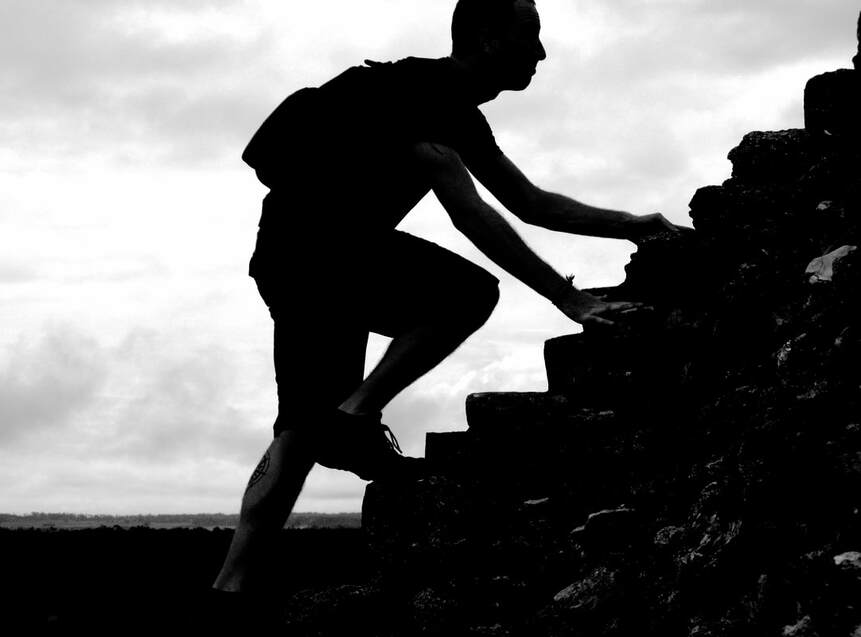
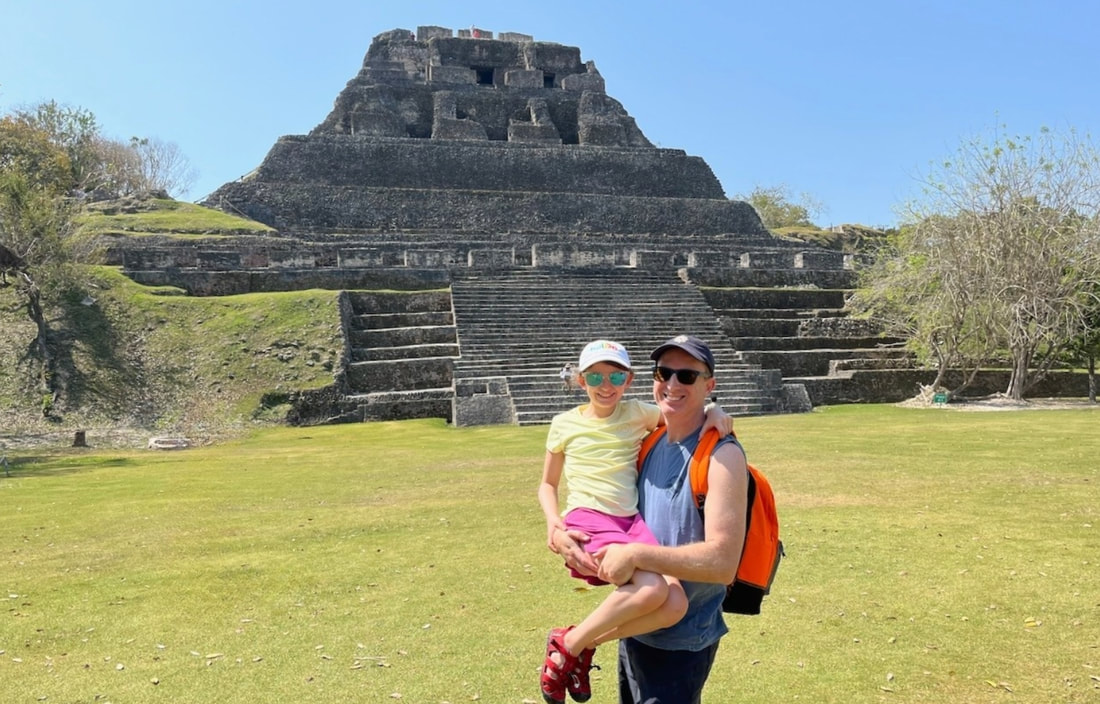



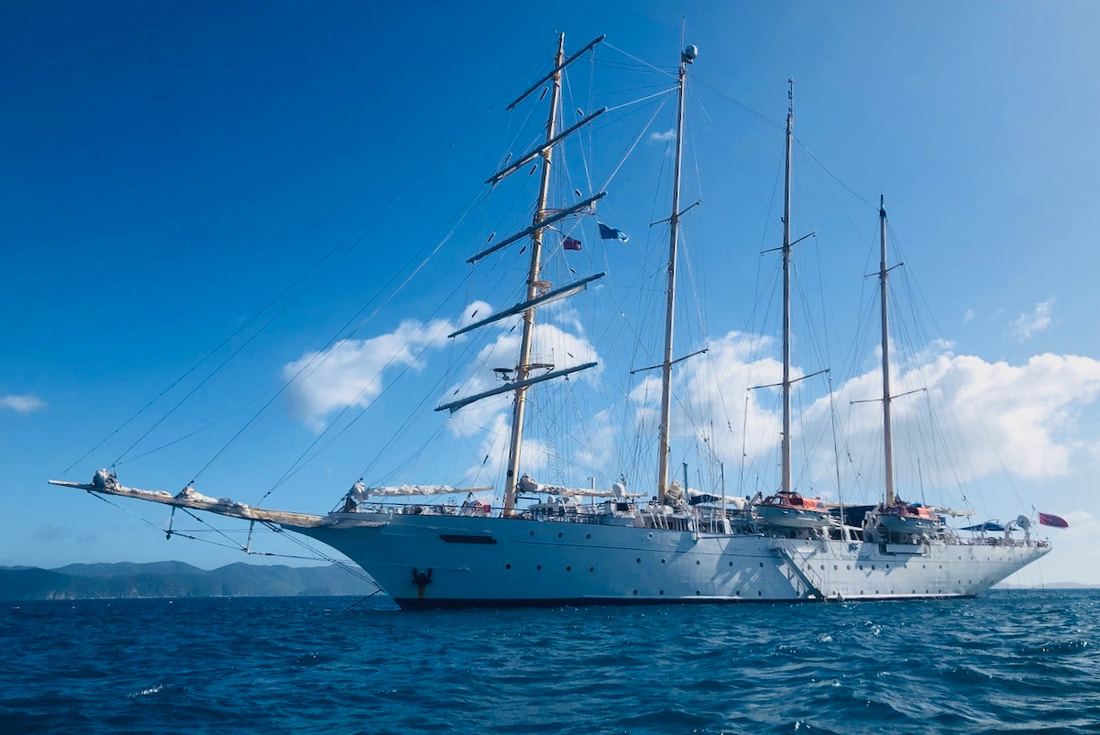
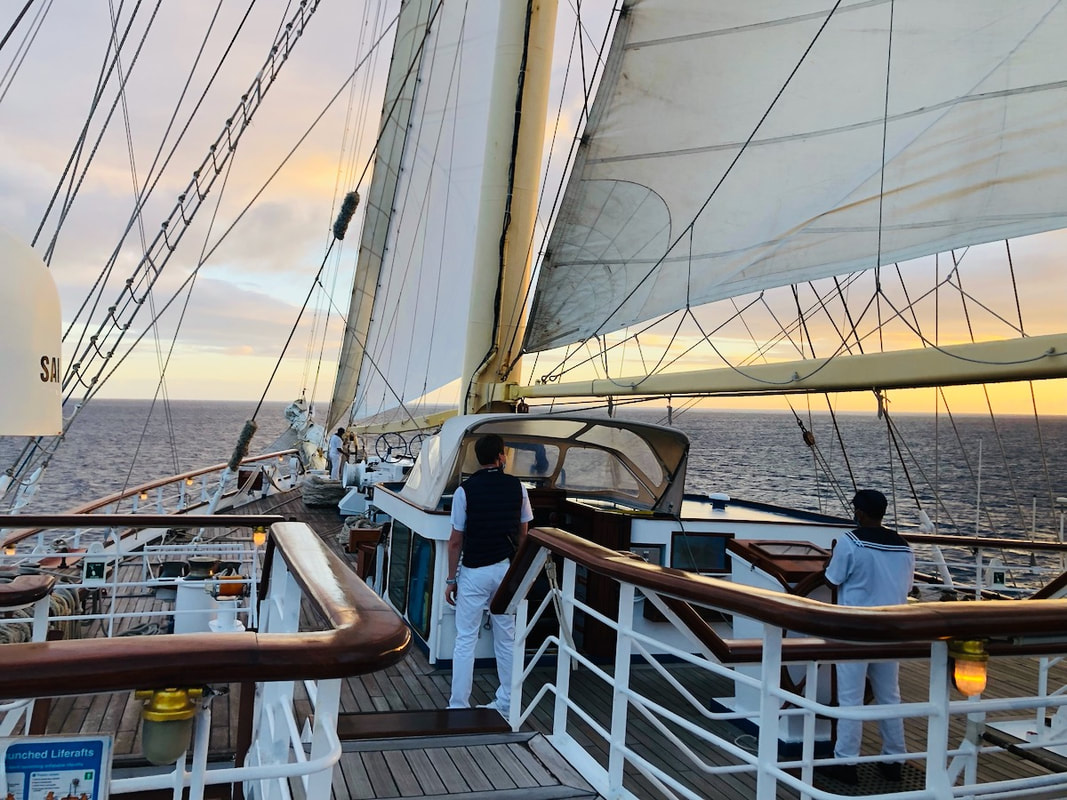
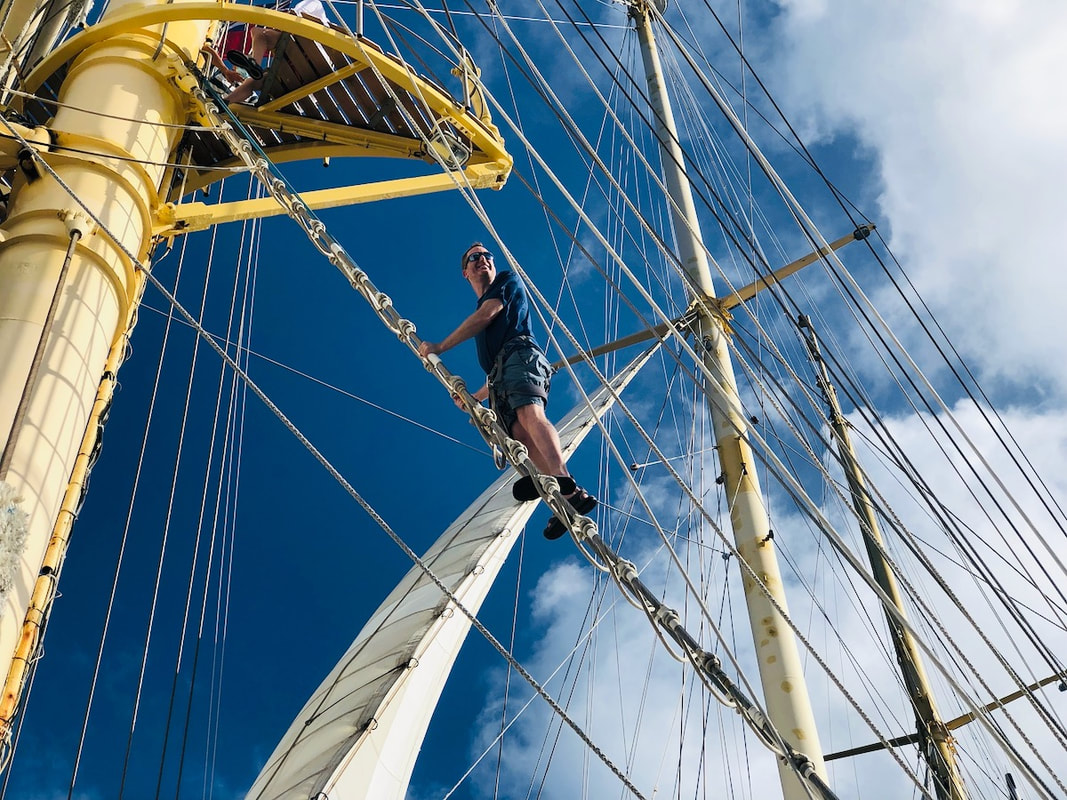
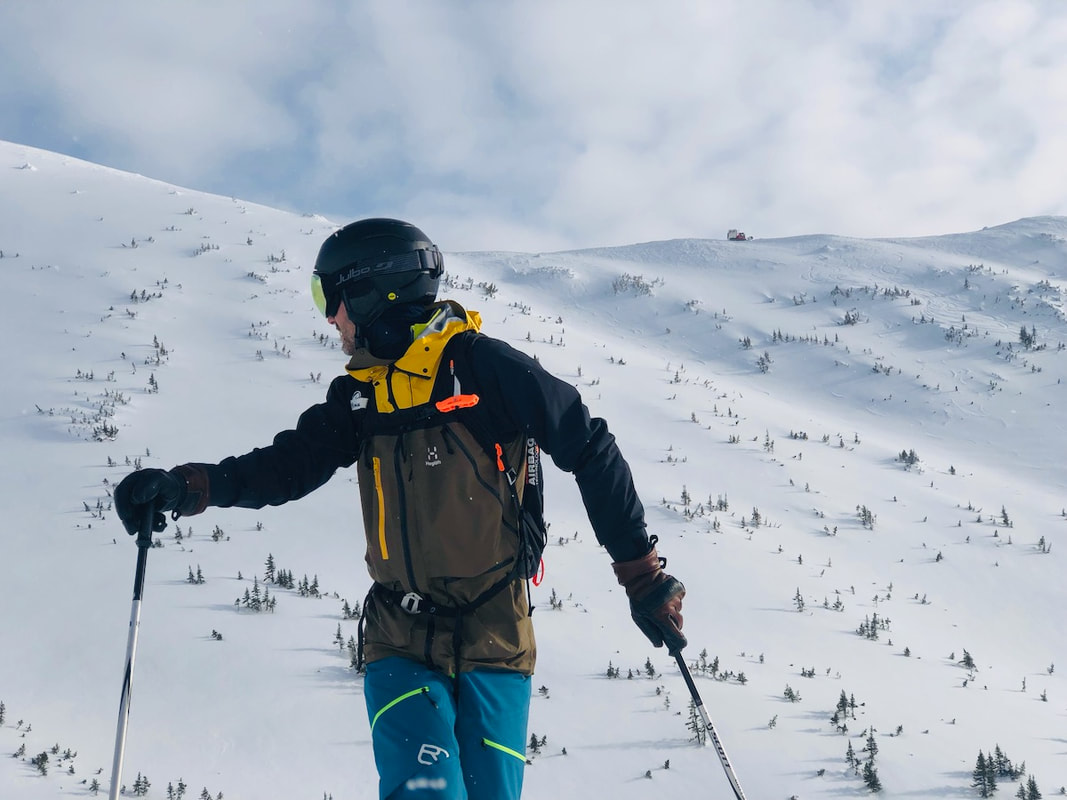
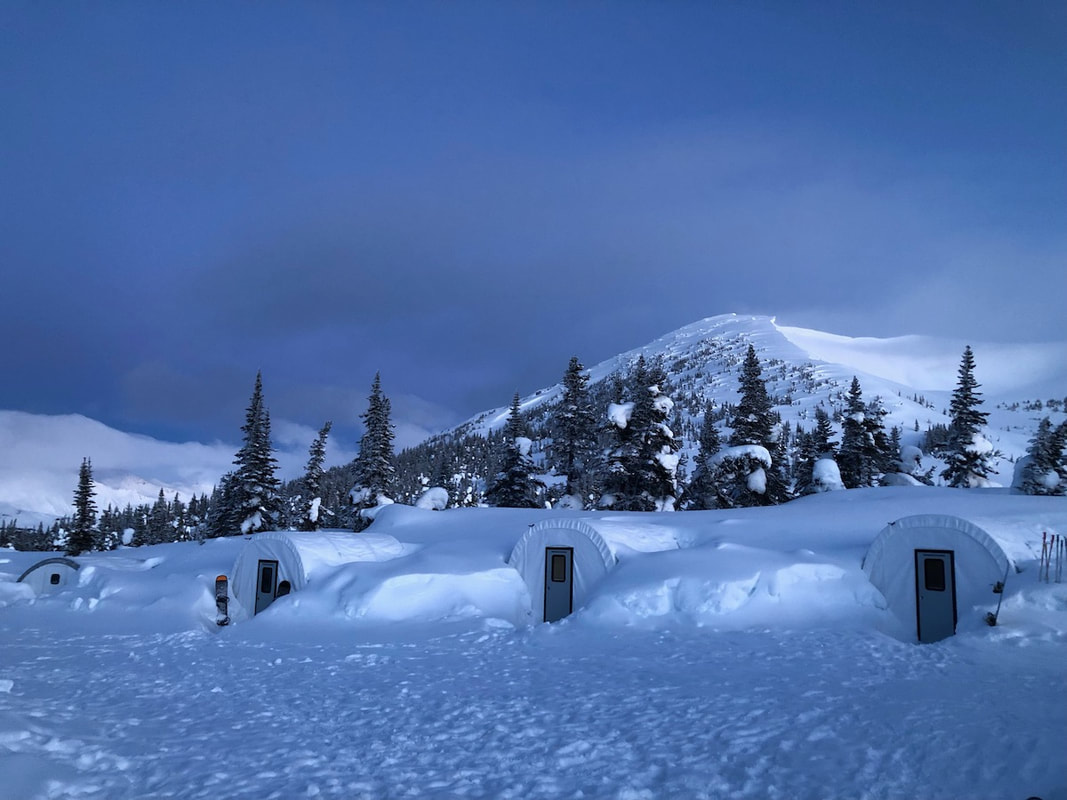



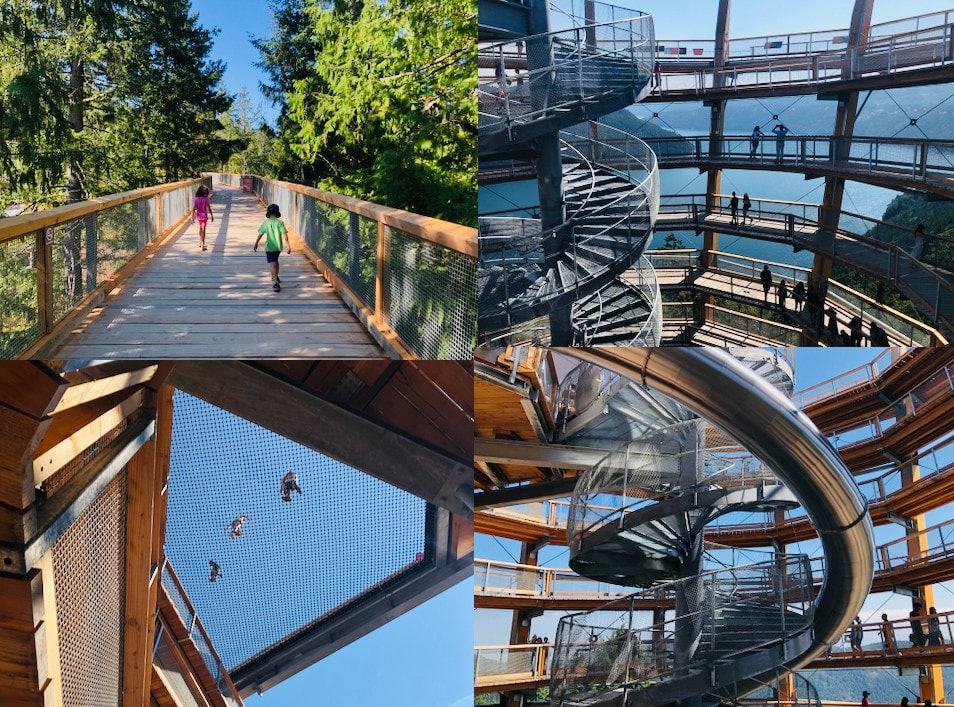
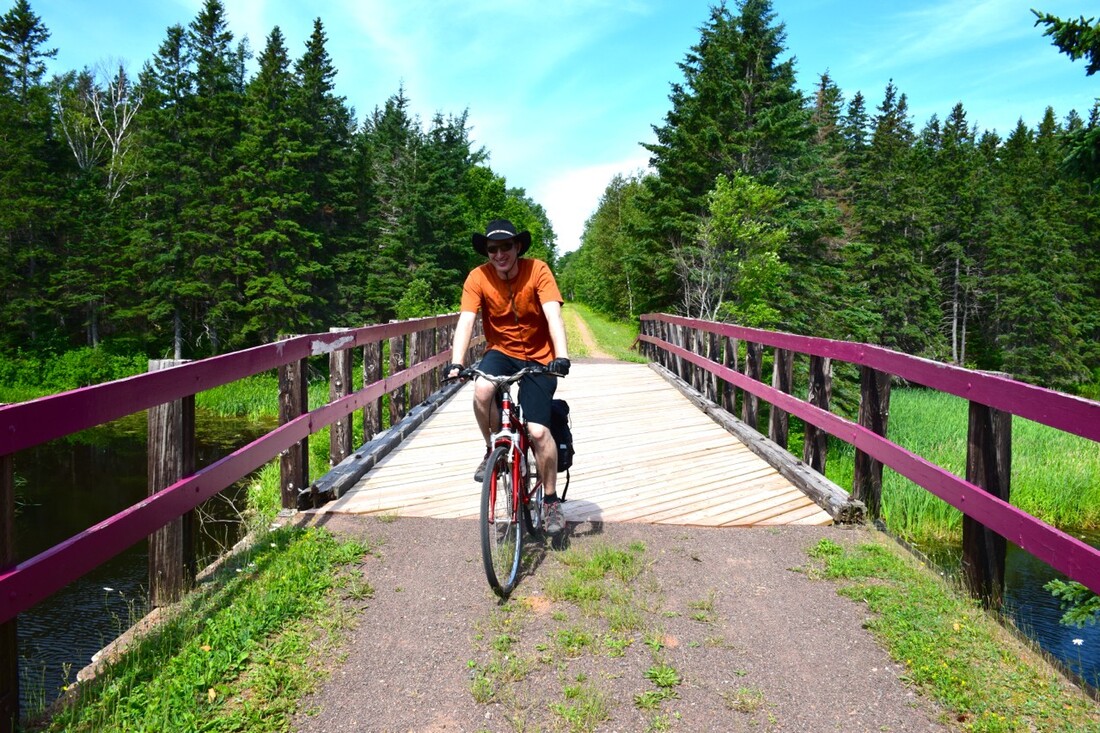
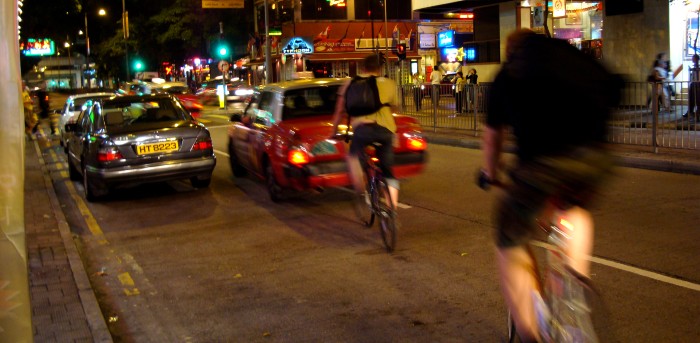


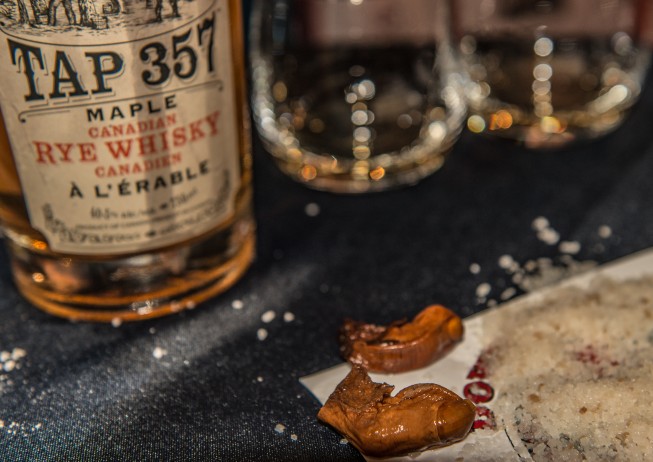



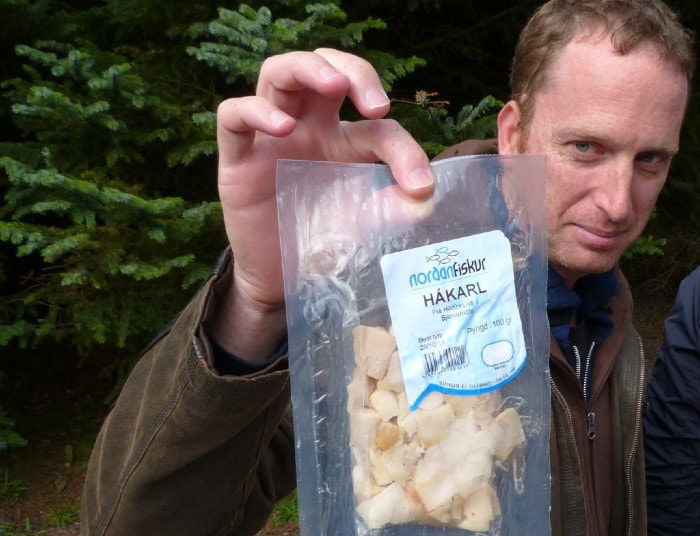

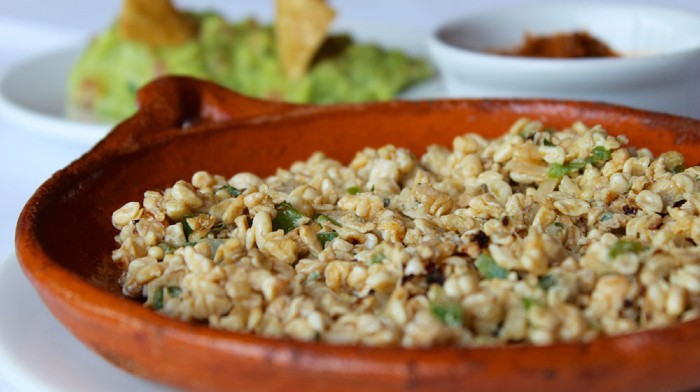


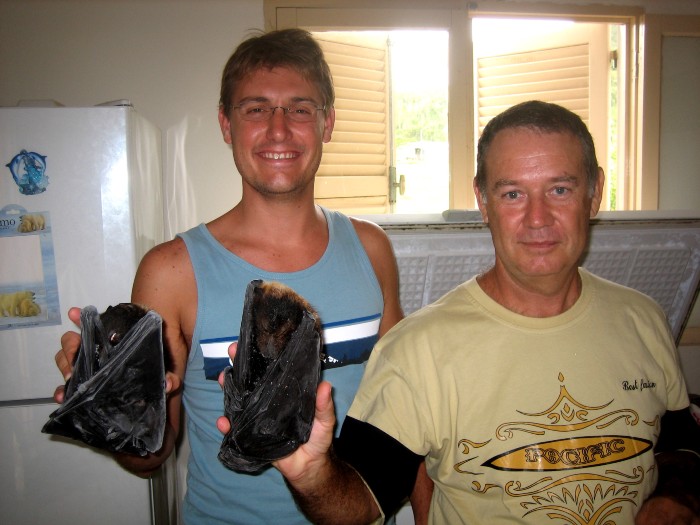
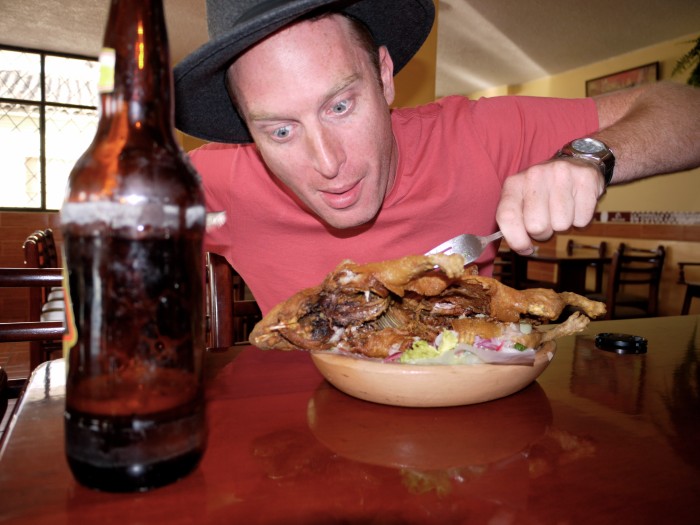
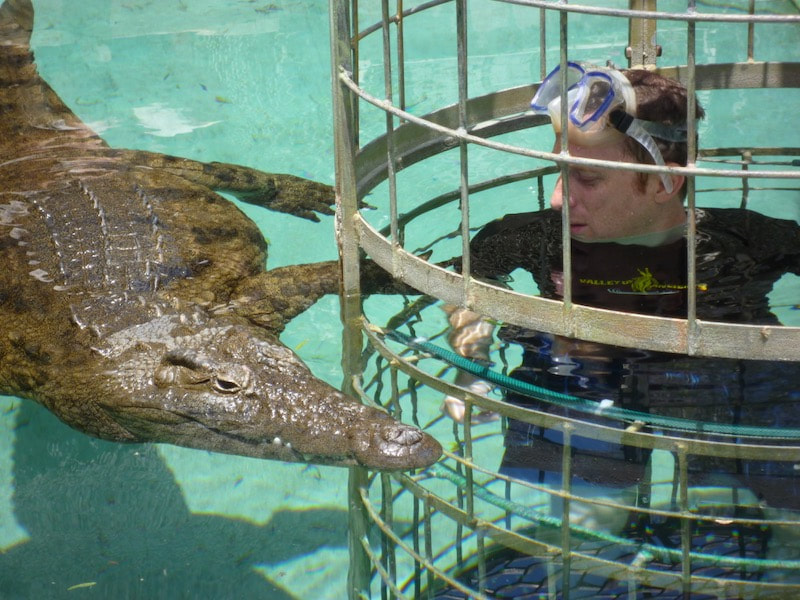
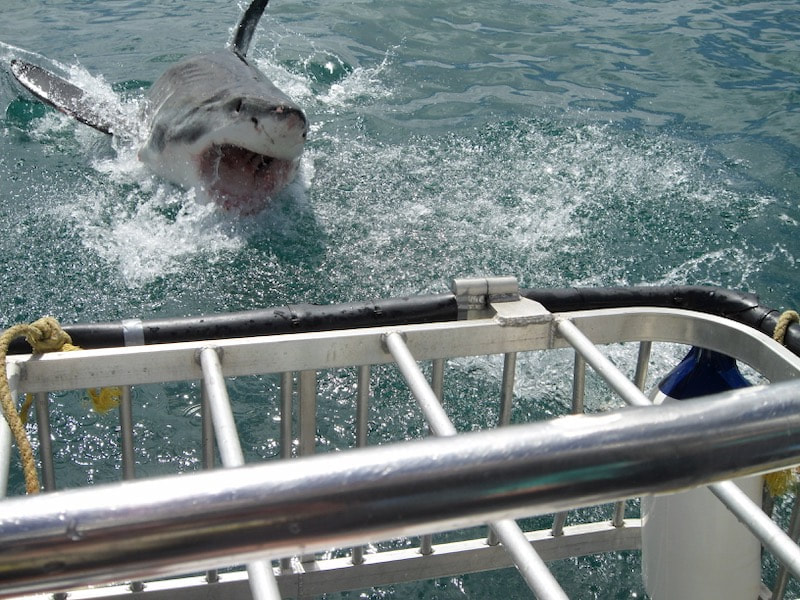
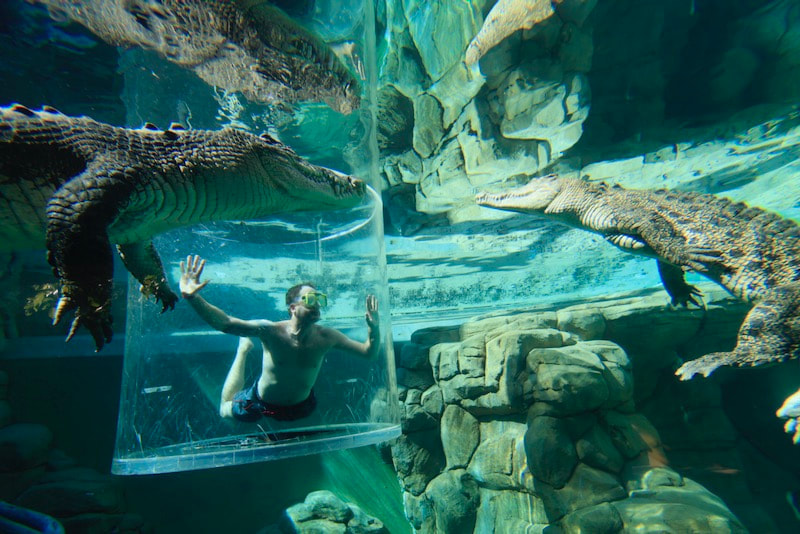
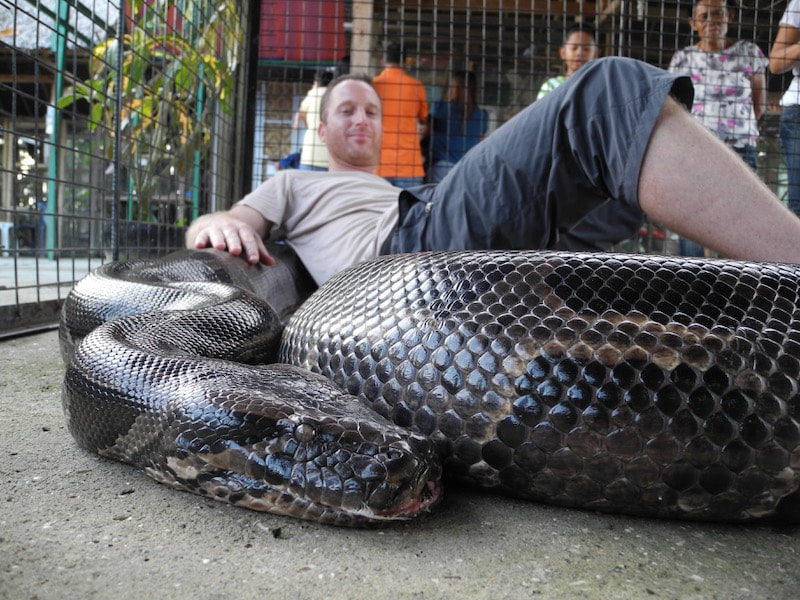
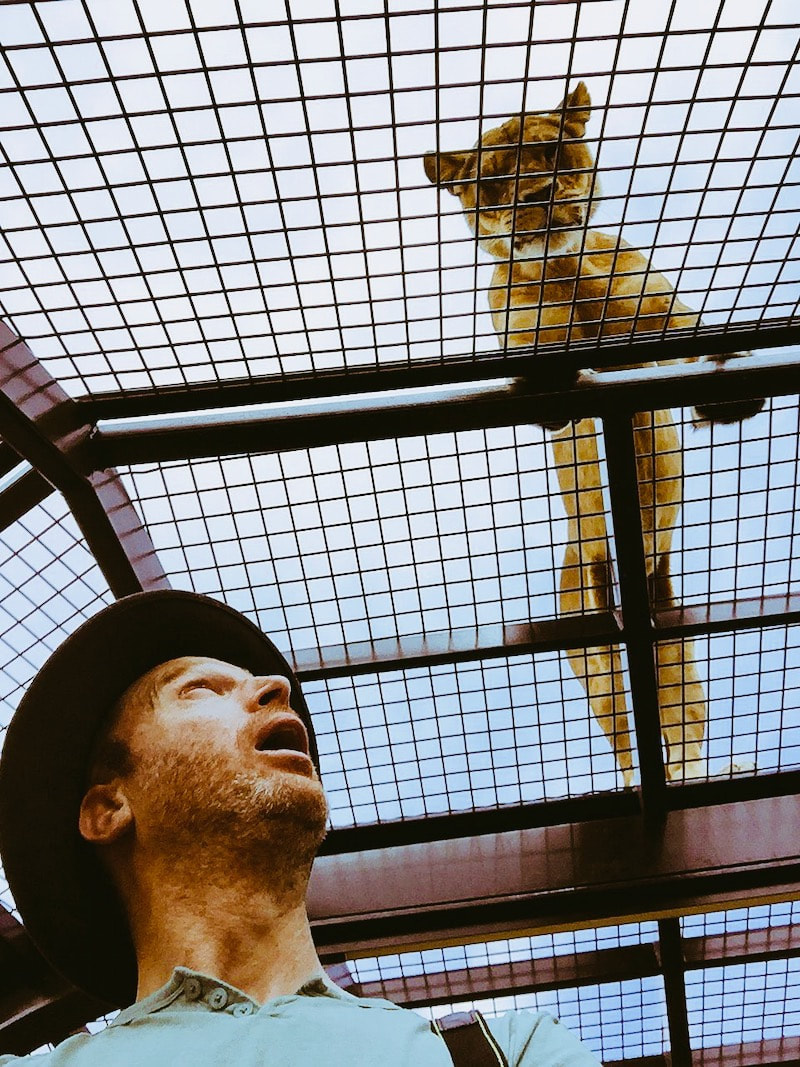
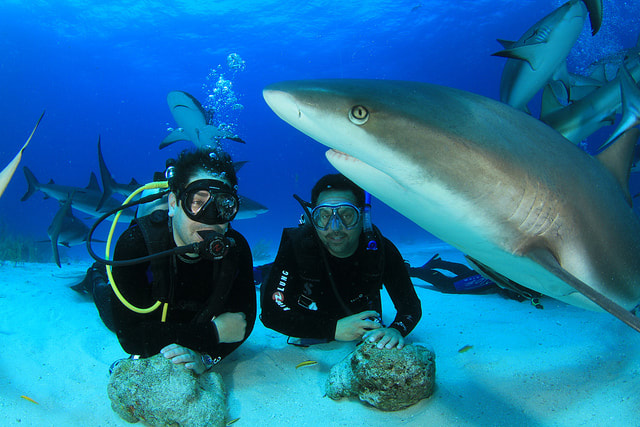
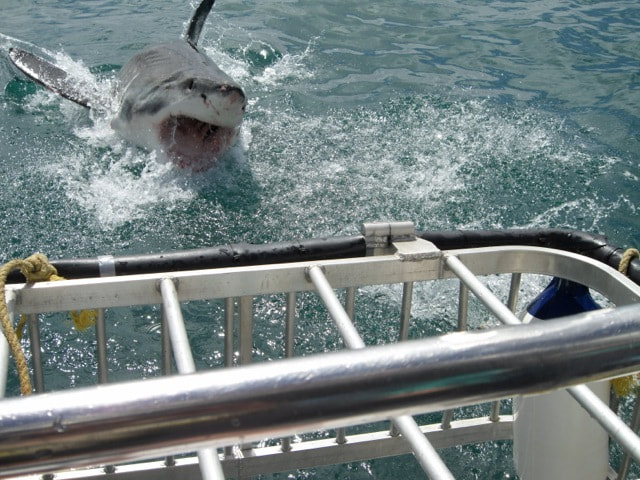

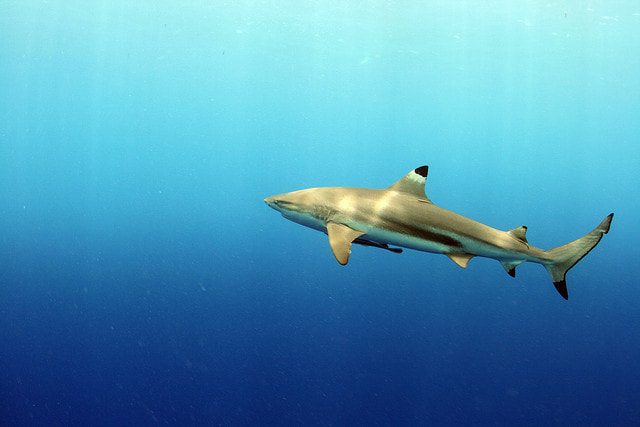

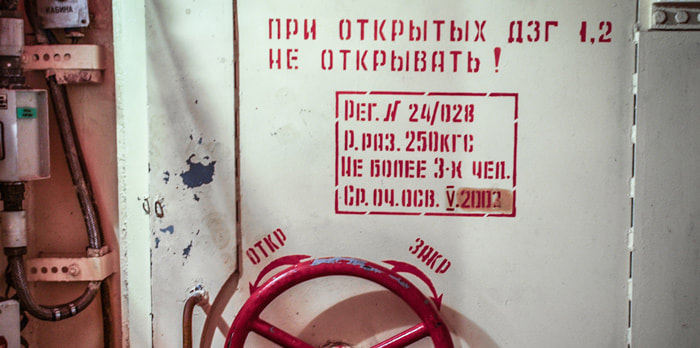

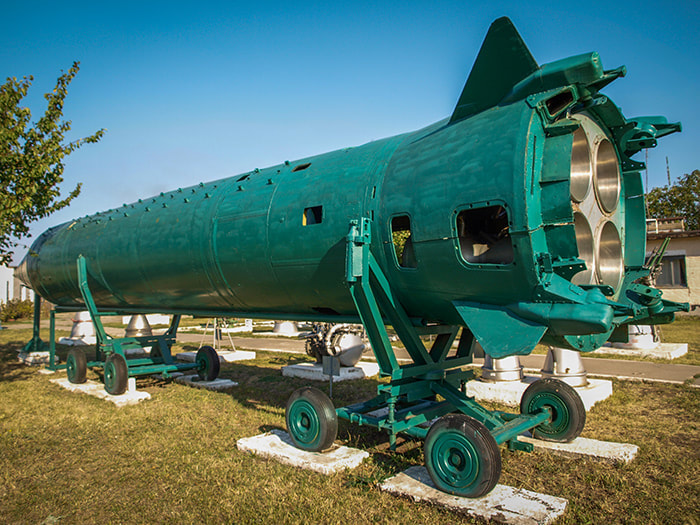

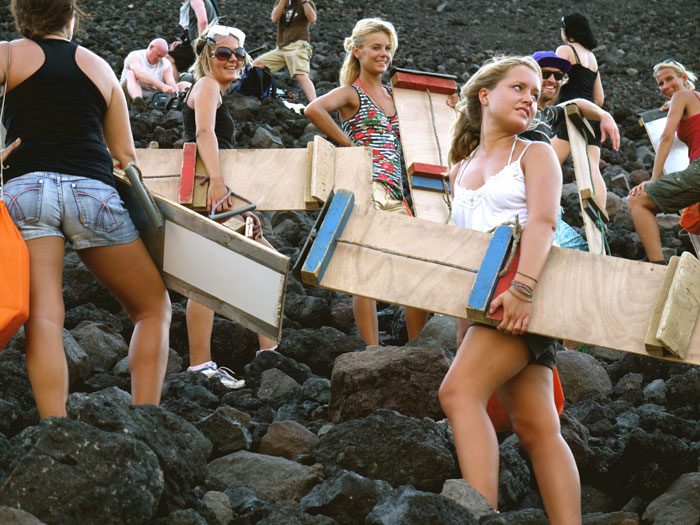

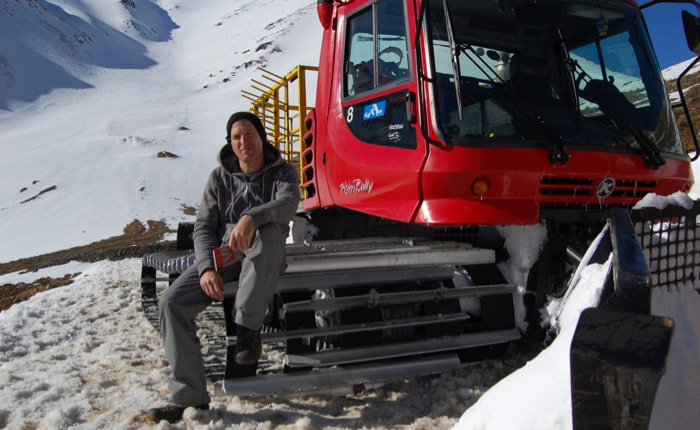
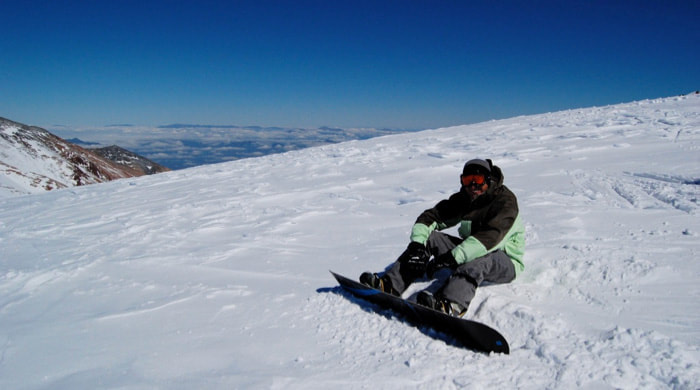
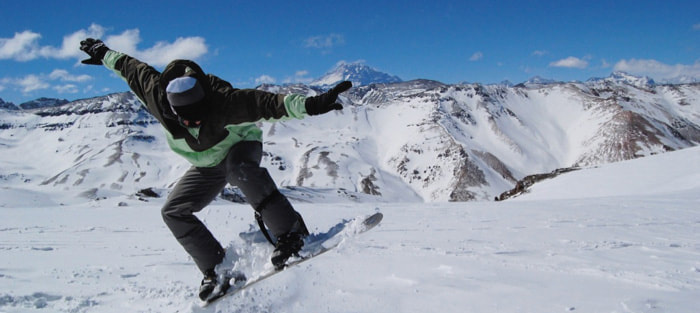
 RSS Feed
RSS Feed

